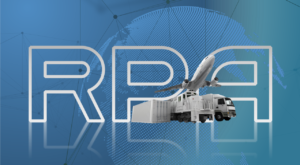It’s no secret some businesses are struggling during the coronavirus pandemic. The pandemic has resulted in a double whammy involving both health and economic risks. Yet even in the midst of a deep recession, David Vellante (@dvellante), co-CEO of SiliconANGLE Media, reports, “Robotic process automation solutions remain one of the most attractive investments for business technology buyers — this despite our overall 2020 tech spending forecasts, which remain at the depressed levels of -4% to -5% for the year. … Despite our tepid spending forecast for the year, demand for RPA software continues to grow at a 60% to 70% clip.”[1] One of the reasons the outlook for RPA is so bright is that many companies are trying to reduce business disruptions that involve human employees — like a pandemic. Another reason RPA is on the rise is that it is often a necessary step in digital transformation efforts. Kanav Guglani, a technical content writer with Signity Solutions, observes, “We live and breathe in a digital world; a world where digital transformation isn’t a choice but a necessity.”[2]
What is robotic process automation?
When some people hear or see the word “robotic” they immediately conjure up images of a metal, mechanical machine. RPA involves no such hardware. Daniel Nelson (@danupnelson), a programmer, explains, “A great deal of the work that people do every day doesn’t involve any of their creativity or unique skills, being highly tedious and simple tasks like categorizing emails and messages, updating spreadsheets, processing transactions, and more. Robotic Process Automation is an emerging technology that often leverages aspects of artificial intelligence to automate these tasks, with the goal of enabling workers to devote their attention to more important tasks.”[3] Vellante adds, “RPA mimics human computer interactions using software scripts or robots that execute human tasks in a runtime assembly of discrete steps. The practice first became popular for back-office functions — mostly as unattended bots.” Guglani notes there are two types of bots: “Programmable Bots: As the name suggests, programmable bots work by the set rules and instructions. That is, these bots need to map the set processes, programmed for specific functions, and maintained throughout the process. [And] Intelligent Bots: These bots benefit from AI and ML capabilities to identify and learn how employees interact with different applications. After analyzing huge piles of data, these bots can perform these actions themselves — freeing employees to focus on high-priority tasks.”
RPA has been referred to as a gateway to cognitive technologies. Nelson explains, “The exact methods RPA platforms and bots use to carry out their task vary, but they often employ some machine learning and AI algorithms, as well as computer vision algorithms. Machine learning and AI techniques may be employed to let the bots learn which actions are correlated with the goals the operator has defined. However, RPA platforms often carry out most of their actions according to rules, therefore acting more like traditional programs than AI. As a result, there is some debate regarding whether or not RPA systems should be classified as AI systems.” In other words, many RPA functions require rules rather than learning. When learning is required to make processes better, cognitive technologies are required.
Digital Transformation Consultant Jim Sinur (@JimSinur) believes cognitive technologies hold the answer to what comes after RPA. He explains, “As AI advances to include right-brained activities such as judgment, particularly in context, RPA can make informed decisions based on leveraging the combination of AI & analytics. Deductions can be made after integrated information sources and knowledge worlds are run through advanced algorithms to take smarter action that considers multiple contexts.”[4] At Enterra Solutions®, we call AI-enhanced RPA Cognitive Process Automation™ (CPA). Cognitive Process Automation goes beyond the accomplishment of routine tasks. CPA has the potential not only to automate, but to improve processes by dynamically processing and executing subtle decisions as if they were made by the best human expert. To be clear, not all programmable processes require advanced cognitive technologies. Simple, rule-based processes get along fine with RPA.
Business benefits of RPA
Ali Siddiqui (@agsiddiqui_ali), Chief Product Officer for BMC, believes RPA can be a game changer for businesses. He writes, “Robotic process automation is here to stay, and it’s experiencing exponential growth.”[5] He stresses, however, that to gain the greatest benefit from RPA, companies need to answer a few questions before implementing RPA solutions. Those questions are:
1. What do you want it to do for your business? “There isn’t a one-size-fits-all RPA solution.”
2. What is your use case? “Do you need core back-end business process automation? Do you need to convert paper-based processes into digital? Do you need to leverage automation to improve day-to-day employee productivity? The possibilities are endless.”
3. What are your prospective automation areas? “If you don’t yet know, process discovery can help. From there, you can select the appropriate tools.”
4. Would a unified, self-service experience complement your existing employee channels? “Would voice or chat tools wholly fulfill their requests through back-end automation?”
Guglani agrees with Siddiqui that the possibilities for RPA are enormous, as are the benefits. He suggests six such benefits organizations might experience. They are:
1. Low to minimal technical barrier. “Programming skills aren’t necessarily required to configure a robotic process automation software robot. Though, having programming knowledge could serve you as an added advantage.”
2. Better compliance. “Automation ensures that both sensitive and critical information is processed securely and in compliance with the current GDRP (General Data Protection and Regulation) guidelines.”
3. Enhanced productivity. “In a report by Gartner, a single RPA bot is equivalent to 30 FTE employees. Since RPA bots follow a set of pre-established rules and double-check for numbers- process times naturally become far more efficient.”
4. Increased employee satisfaction. “In a Forrester study funded by UiPath, it was highlighted that post-RPA implementation, 60% of the participants felt happy, and found their work meaningful. … RPA bots eliminate mind-numbing, mundane, and repetitive tasks, whilst allowing the employees to use their cognitive skills to focus on high-value tasks; thus, improving productivity, and employee satisfaction.”
5. Accelerated digital transformation. “Digital transformation is fundamentally based on technology and associated factors like — how well it is adopted and implemented within an organization. Robotic Process Automation provides a fundamental framework that helps your business drive operations autonomously.”
6. Non-invasive compatibility. “Traditional automation systems compelled organizations to invest resources in new infrastructure, and integrate processes across multiple applications. Whereas with Robotic process automation, there’s no such need. RPA sits above the existing layers, without disrupting the underlying systems.”
Concluding thoughts
UiPath reports a commissioned study conducted by Forrester Consulting on its behalf “revealed that companies are increasingly using RPA and other intelligent automation technologies to address new business and market pressures stemming from the pandemic, but still believe a people-centric approach is critical to success in the future of work.”[6] The study also revealed, “The world has seen more digital transformation in the past few months than in the preceding five years. Intelligent automation technologies, including RPA, are supporting and accelerating this surge. With 48% of survey respondents planning to increase RPA spend over the next year, companies are using RPA to: Increase agility, diversity, and resilience in their supply chain operations (83%); address extraordinary cost pressures by automating back-office and operational tasks (80%); [and] support remote workforces (75%).” Although some pundits are worried that the economic recovery from the pandemic could be a jobless one, such an outcome could be disastrous for the global economy. The Forrester report concluded, however, that a people-centric approach can avoid a jobless recovery.
Footnotes
[1] David Vellante, “Robotic process automation battle for a bigger prize: automation everywhere,” SiliconANGLE, 8 August 2020.
[2] Kanav Guglani, “Everything You Need to know About Robotic Process Automation,” Signity Blog, 16 June 2020.
[3] Daniel Nelson, “What is Robotic Process Automation (RPA)?” Unite.ai, 30 July 2020.
[4] Jim Sinur, “The Potential Of AI & RPA Together,” Forbes, 24 March 2020.
[5] Ali Siddiqui, “With Proper Planning, RPA Can Change The Game For Your Business,” Forbes, 22 July 2020.
[6] UiPath, “Nearly 50% of Businesses Around the World Will Increase Robotic Process Automation Adoption Due to COVID-19,” Supply & Demand Chain Executive, 28 July 2020.





